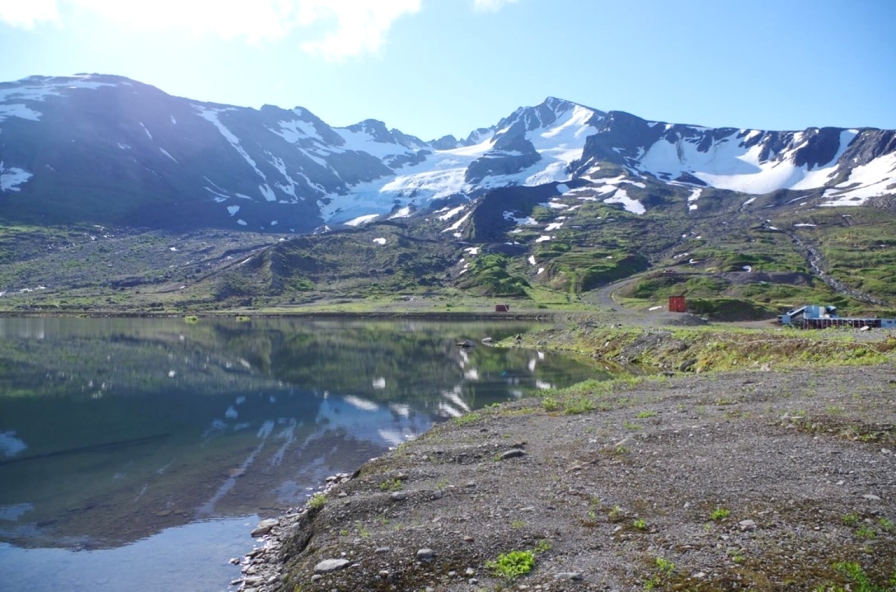PDAC Round-Up: The Low-Down on Gold Corrections, Canadian Regulators, Labor Shortages and Argentine Nationalization Rumors
Source: Brian Sylvester of The Gold Report (3/7/12)
Worried about the next correction in the gold price? Don't be, said Martin Murenbeeld, chief economist for the Dundee Companies, during a presentation at 80th annual Prospectors and Developers Association of Canada (PDAC) convention in Toronto.
Murenbeeld said that there have been no less than seven corrections greater than 10% since gold started its bull run in 2001. Murenbeeld then cited his now-famous 10 reasons to be bullish on gold. They are: monetary reflation, by far the biggest factor because, as Murenbeeld said: "printing money makes gold move"; global trade imbalances; global for-ex reserves now total more than $10 trillion; central banks buying gold, not selling; no bubble: gold's performance chart versus other bubbles (can you say tech bubble?) still indicates that gold is virtually bubble-free; mine supply is up only modestly; investment demand continues to move upward; commodity cycles: the shortest commodity cycle ever for gold is 10 years and the shortest ever for copper is 16 years; an unstable geopolitical environment as the U.S. sees its power diminish; and inflation in emerging markets.
On the flip side, Murenbeeld added eight reasons to be bearish on gold: a Eurozone recession; a Chinese recession; weaker physical demand; a stronger U.S. dollar; gold being the liquidity of last resort (we saw this time and again in 2011); greater confidence in equity markets; another round of gold hedging; and government policy exit strategies (i.e., rising interest rates). Murenbeeld shrewdly noted that the U.S. still has the world's greatest gold reserves. "You never sell gold when you can print your own money," quipped Murenbeeld. He predicts gold will average US$1,825/ounce (oz) in 2012.
. . .In an afternoon session at the PDAC, Glen Jones, executive director, Western Hemisphere, Intierra Resource Intelligence (formerly Raw Materials Group) presented an overview of the copper market. Jones said there are roughly 35,000 active mining projects in the world, with gold holding down the top spot with 16,200 projects. Copper is second with 7,300 active projects, most of which are concentrated in Australia, Canada, Peru, Chile and along the copper-rich belts of central Africa. Jones said there will be an 83,000 metric tonne copper supply deficit in 2012 and expects copper to average US$3.88–3.90/pound (lb) this year. . .
Joe Oliver, Canada's minister of natural resources provided the keynote address to open the conference Monday morning. "Our government is seizing opportunities to open new markets, to support innovation, to attract investment and to improve the regulatory system for major projects." He then discussed the need for one securities regulator in Canada. Unlike the SEC in the U.S. (the way things really ought to be), Canada currently has separate securities regulators in British Columbia, Ontario, Alberta and Quebec. A single securities regulator akin to the SEC was part of the Conservative Party of Canada's platform when it won a majority government in 2010. . .
Patricia Mohr, vice-president of economics at the Bank of Nova Scotia, followed Oliver and provided an outlook for commodities. Between 1995 and 1997, the Scotiabank Commodities Price Index was weighted as follows: 26.8% mining and metals, 16.9% oil and gas, 39.8% forestry and 16.8% agriculture. By 2010, however, the weighting was 30.1% mining and metals (now including iron ore); 39.9% oil and gas, 14.7% forestry and 15.3% agriculture. Mohr said metals and mining prices increased an average of 12.2% over the previous five years, versus only 9.4% for oil and gas. She predicted Chinese GDP growth at 8.6% in 2012 (only to see the Chinese government come out hours later with 7.5%), 7.4% for India and 3.8% for Brazil. The good news is that the Chinese government is heavily supporting first-time homebuyers and is telling banks to provide them with mortgages. The Chinese plan is to build 7 million (M) units of social housing in 2012, which should be a boon to base metals and steel producers. Mohr also said Americans are replacing their old cars with new ones and expects continued strong new car sales. Mohr believes gold will trade in the US$1,750–$1,800/oz range this year but said that more monetary reflation will be needed to push gold above $2,000/oz. Other 2012 commodity predictions: US$0.94/lb zinc; US$3.90/lb copper; coking coal US$236/ton; and uranium US$52/lb. "If you're a betting person, (uranium) might be a good long-term play," Mohr said.
Meanwhile. . .outgoing PDAC President Scott Jobin-Bevans believes the biggest issue facing the mining industry is the lack of skilled workers. According to the Mining Industry Human Resources Council, the mining industry will need 130,000 skilled workers over the next 10 years just to keep things moving at today's pace. "We can still find the mines but we can't put them into production because we don't have the people," Jobin-Bevans said. . .
Rob McEwen was busy promoting the eponymous McEwen Mining Inc. (MUX:TSX; MUX:NYSE), the new business combination of U.S. Gold and Minera Andes. It already has a market cap of $670M. McEwen touted the company's assets, including the 49%-owned San Jose silver mine in Argentina, where local governments are looking for a bigger piece of the action. McEwen was asked about it: "Just before the end of the year the central bank of Argentina said they were going to require all mining companies to put their revenues through the central bank of Argentina. This was standardizing the model with all the other industries that export (from Argentina). And on whispers of nationalism: "Recently there was an announcement by the governor of Santa Cruz province, where our San Jose mine's located. The current royalty to the government is 3% and they said: 'We would like to move it to 12%.' That would take an act of the national government, not a state government, but it shook up a lot of people and it did create some uncertainty in the market place. . .Argentina has never nationalized a project—I mean they have taxed the heck of out them—but it has never nationalized a project, so I take comfort in that."
On the flip side, Murenbeeld added eight reasons to be bearish on gold: a Eurozone recession; a Chinese recession; weaker physical demand; a stronger U.S. dollar; gold being the liquidity of last resort (we saw this time and again in 2011); greater confidence in equity markets; another round of gold hedging; and government policy exit strategies (i.e., rising interest rates). Murenbeeld shrewdly noted that the U.S. still has the world's greatest gold reserves. "You never sell gold when you can print your own money," quipped Murenbeeld. He predicts gold will average US$1,825/ounce (oz) in 2012.
. . .In an afternoon session at the PDAC, Glen Jones, executive director, Western Hemisphere, Intierra Resource Intelligence (formerly Raw Materials Group) presented an overview of the copper market. Jones said there are roughly 35,000 active mining projects in the world, with gold holding down the top spot with 16,200 projects. Copper is second with 7,300 active projects, most of which are concentrated in Australia, Canada, Peru, Chile and along the copper-rich belts of central Africa. Jones said there will be an 83,000 metric tonne copper supply deficit in 2012 and expects copper to average US$3.88–3.90/pound (lb) this year. . .
Joe Oliver, Canada's minister of natural resources provided the keynote address to open the conference Monday morning. "Our government is seizing opportunities to open new markets, to support innovation, to attract investment and to improve the regulatory system for major projects." He then discussed the need for one securities regulator in Canada. Unlike the SEC in the U.S. (the way things really ought to be), Canada currently has separate securities regulators in British Columbia, Ontario, Alberta and Quebec. A single securities regulator akin to the SEC was part of the Conservative Party of Canada's platform when it won a majority government in 2010. . .
Patricia Mohr, vice-president of economics at the Bank of Nova Scotia, followed Oliver and provided an outlook for commodities. Between 1995 and 1997, the Scotiabank Commodities Price Index was weighted as follows: 26.8% mining and metals, 16.9% oil and gas, 39.8% forestry and 16.8% agriculture. By 2010, however, the weighting was 30.1% mining and metals (now including iron ore); 39.9% oil and gas, 14.7% forestry and 15.3% agriculture. Mohr said metals and mining prices increased an average of 12.2% over the previous five years, versus only 9.4% for oil and gas. She predicted Chinese GDP growth at 8.6% in 2012 (only to see the Chinese government come out hours later with 7.5%), 7.4% for India and 3.8% for Brazil. The good news is that the Chinese government is heavily supporting first-time homebuyers and is telling banks to provide them with mortgages. The Chinese plan is to build 7 million (M) units of social housing in 2012, which should be a boon to base metals and steel producers. Mohr also said Americans are replacing their old cars with new ones and expects continued strong new car sales. Mohr believes gold will trade in the US$1,750–$1,800/oz range this year but said that more monetary reflation will be needed to push gold above $2,000/oz. Other 2012 commodity predictions: US$0.94/lb zinc; US$3.90/lb copper; coking coal US$236/ton; and uranium US$52/lb. "If you're a betting person, (uranium) might be a good long-term play," Mohr said.
Meanwhile. . .outgoing PDAC President Scott Jobin-Bevans believes the biggest issue facing the mining industry is the lack of skilled workers. According to the Mining Industry Human Resources Council, the mining industry will need 130,000 skilled workers over the next 10 years just to keep things moving at today's pace. "We can still find the mines but we can't put them into production because we don't have the people," Jobin-Bevans said. . .
Rob McEwen was busy promoting the eponymous McEwen Mining Inc. (MUX:TSX; MUX:NYSE), the new business combination of U.S. Gold and Minera Andes. It already has a market cap of $670M. McEwen touted the company's assets, including the 49%-owned San Jose silver mine in Argentina, where local governments are looking for a bigger piece of the action. McEwen was asked about it: "Just before the end of the year the central bank of Argentina said they were going to require all mining companies to put their revenues through the central bank of Argentina. This was standardizing the model with all the other industries that export (from Argentina). And on whispers of nationalism: "Recently there was an announcement by the governor of Santa Cruz province, where our San Jose mine's located. The current royalty to the government is 3% and they said: 'We would like to move it to 12%.' That would take an act of the national government, not a state government, but it shook up a lot of people and it did create some uncertainty in the market place. . .Argentina has never nationalized a project—I mean they have taxed the heck of out them—but it has never nationalized a project, so I take comfort in that."



































